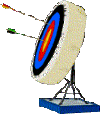Compass Bearings Hypothesis
Suns' Azimuth Hypothesis
Expansion-Contraction Hypothesis
Never Go Back Hypothesis
Directory of Hypotheses About Butterfly Navigation
How To Test Hypotheses



A Cautionary Note About Hypothesis Testing
A hypothesis is a starting point for an investigation and, more often than not, fails to account for resulting data and is falsified. Nevertheless, falsifying hypotheses is generally believed to be the best way to increase our understanding a phenomenon. When you have eliminated every other possible explanation, what is left MAY be the correct answer. Hypotheses that withstand many and varied tests are incorporated into more general hypotheses (i.e. theories) about the way things are. The theory of evolution is based upon a large number of robust hypotheses (e.g. inheritance is particulate, acquired traits are not incorporated into the germ cells, mutation is not directed, etc.) that have resisted falsification. Unfortunately, sometimes a hypothesis seems to be so obviously true that investigators are at risk of unconsciously biasing their research towards validating (not falsifying) it. In extreme cases, an investigator becomes so strongly biased in favor of the hypothesis that he or she refuses to even acknowledge the existence of conflicting data. Fortunately, the risk of becoming too attached to particular hypotheses is minimized by considering multiple hypotheses. This approach is the standard procedure for research in behavioral ecology and is the approach used by Tactics and Vectors.
The data generated by the Tactics and Vectors research program will be used to test hypothesis about how migrating butterflies navigate, and the adaptive function of their flight tactics. Participants in the program are encouraged to suggest additional hypotheses for posting on the Tactics and Vectors web site.